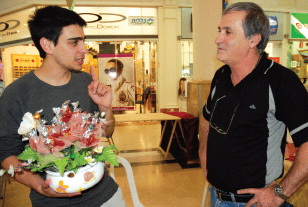
Yoav Cohen & Shimon Mizrachi
July-August 2009
Mike and I are gradually beginning to feel at home in Sderot. On our second day here we were sitting having breakfast on the porch of our ground floor apartment looking out beyond the garden fence where we knew there was an open field. Suddenly however, we saw beyond the main road, the industrial area on the left and the hi-tech on the right and in the distance the Judean Hills with beautiful colors changing all the time. We then realized that we are situated on the eastern edge of Sderot, far from Gaza.
The first thing you notice when entering the town (of more than 20,000 residents, originally mostly Moroccan, but today almost one third Russian speaking) is that all the bus-stops have adjoining shelters. All the schools too are Kassam-proof with roofs built over their original roofs. Everywhere one can also see shelters going up in the yards of private homes - financed by the government.
The center of the town is a bit haphazard, but since the new mayor took over the town is kept very clean. There is also a beautiful park at the entrance to Sderot. The center has a Supersol, a Victory and a Superpharm and the best bakery with wonderful croissants. Twice a week there is an open air shuk (market). A third supermarket, Mega-Bul, is in the Sderot industrial area near where we live.
When our grandchildren came to visit, they came by train to Ashkelon, which is the final train stop and is 20 minutes from Sderot. On our way to Ashkelon we visited the Zikkim Beach and were amazed to see all the watermelon fields which account for the continual cries of ‘avatiach’ which we hear in the neighborhood. On the way back from Ashkelon we stopped at an observation point at kibbutz Nir Am where there is a large stone map of the Gaza strip indicating the towns (Beit Hanun, Jamalya) from where the Kassam rockets were fired on Sderot and the Western Negev.
On Friday morning, it being too hot to do anything else together with the children, they went to the Cinematheque which was showing films suitable for teenagers and which they thoroughly enjoyed. In the Cinematheque complex there is a kiosk run by youth at risk, and even a popcorn machine. The Cinematheque was set up in a protected building by various donors to provide entertainment and some relief from stress.
Five minutes by car from Sderot is the Shaar HaNegev Regional Council Center where the Sapir College is situated. We learnt that the college, the Sapirim Industrial Park and other services all belong to the ten kibbutzim, Havat Hashikmim and one moshav that make up the Shaar HaNegev Regional Council. At the community center there is a pool for hydrotherapy as well as a regular swimming pool where Mike swims every day and where I have started Feldenkreis exercises.
Everyone is very warm, friendly and informal. In fact when we were looking for information about Sderot we were advised to go to the mayor’s spokesperson. When we asked if we had to make an appointment, they said “no, just go upstairs”, which we did and she turned out to be a most welcoming and helpful spokesperson.
September 2009
A few weeks ago Mike and I dropped into the Sderot Media Center (an NGO) in the middle of Sderot. Its mission is to generate global awareness of and empathy for the residents of Sderot and the Western Negev (Otef Aza) who suffered for over eight years from Kassam rockets, through the dissemination of authentic personal reports.
We had heard that the director, Noam Bedein, had gone to Geneva to testify before the “Goldstone commission”, the United Nations’s “fact finding” mission on the Gaza conflict, especially the Cast Lead operation to which the Israeli government did not send official representatives. I had also received a letter from a cousin in Australia who had heard Noam speak at a Jewish group in Sydney. We hope to interview Noam upon his return.
Our visit took place before the Goldstone commission published its results and Noam was still abroad. Someone in the center asked if I was from Johannesburg or Cape Town. And that’s how we met Yoav Cohen, originally from South Africa, from where he had come as a child with his family in 1997 to Raanana. We also met his mother Tessa and one sister who were on a trip around Sderot.
Yoav has been volunteering for the center since the Cast Lead operation. He finished the army (four years in Mishmar Hagvul) and is now studying “government and diplomacy” at the IDC in Herzliya whilst working part time at SAP in Raanana. He had phoned the center to ask how he could help and was told that the small businesses in Sderot were suffering. Within 48 hours he and three fellow students, Yuval Bedolach, Adir Ben-Tovim and Ortel Schvili, arranged for two bazaars to be held. One took place at the Renanim mall in Raanana where the manager went all out to help, allowing distribution of flyers and other material. Approximately ten stalls were set up for these businesses to bring their wares and sell them. The second bazaar was held at SAP which has about 1000 employees.
Today Yoav comes down to Sderot regularly to help the center upgrade its website.
We have also heard that whilst physically (at last) all schools and bus stops are protected, and that individual shelters are being built all around in private gardens, there is not enough ongoing emotional support for those who suffered trauma. The Media Center has set up a theater workshop to help high school girls cope with this and they are now interested in putting on their show outside the area.
Although it is fairly quiet now in Sderot and the surrounding area, the aspect of 'hasbara’ (PR) is critical.
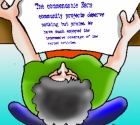 DEAR EDITOR 152
DEAR EDITOR 152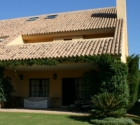 TIDBITS, COMMENTS AND ODDITIES-152
TIDBITS, COMMENTS AND ODDITIES-152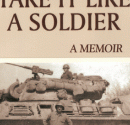 TAKE IT LIKE A SOLDIER - A MEMOIR - A Review
TAKE IT LIKE A SOLDIER - A MEMOIR - A Review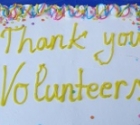 A new website in English - on Volunteering - Launched in Israel
A new website in English - on Volunteering - Launched in Israel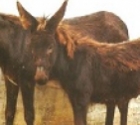 Help Needed for Abused Horses and Donkeys
Help Needed for Abused Horses and Donkeys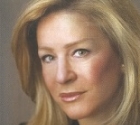 Heather's Heseg
Heather's Heseg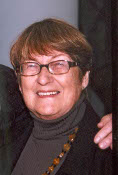 Adele Rubin
Adele Rubin